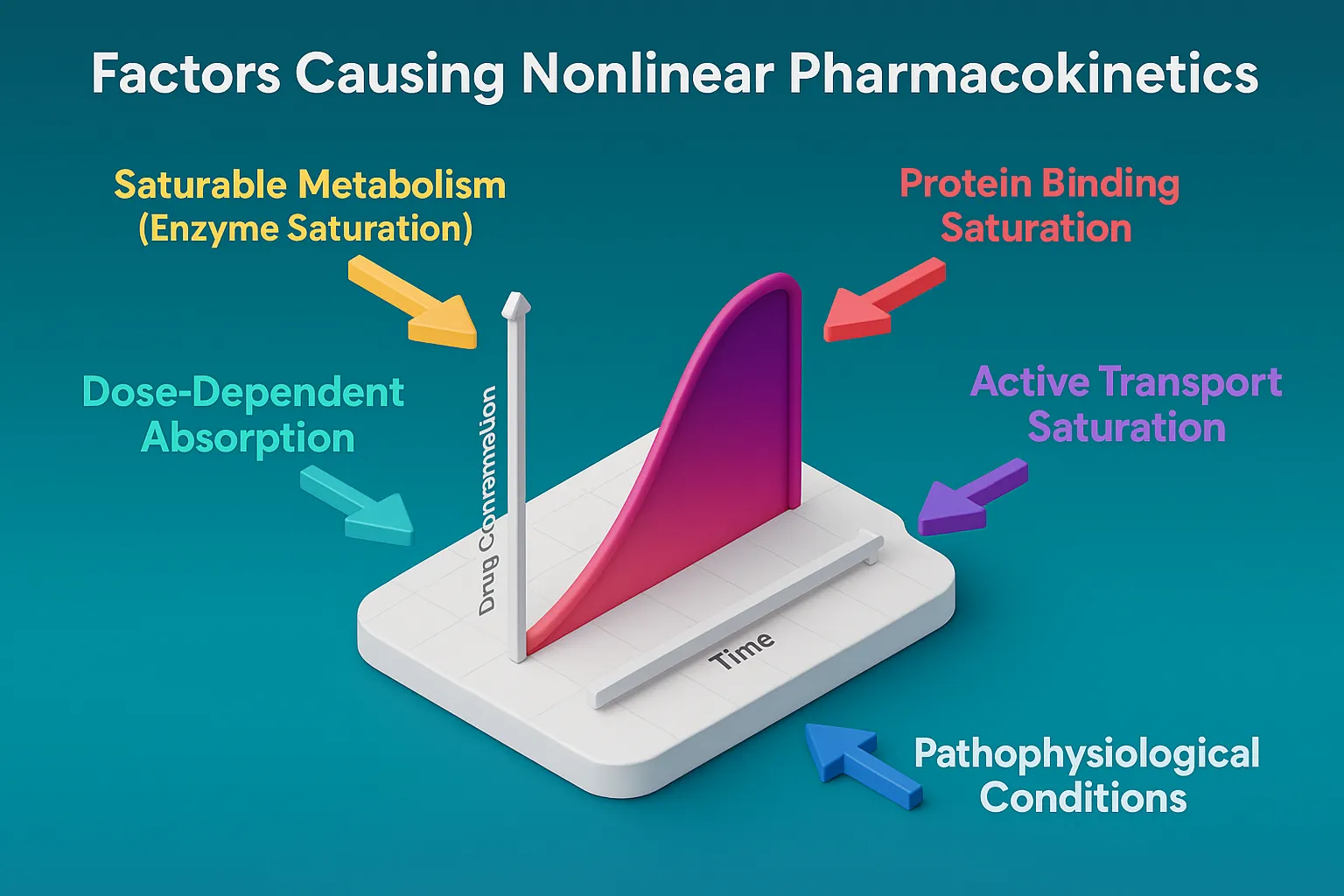Factors Causing Nonlinear Pharmacokinetics include enzyme saturation, protein binding, transport limits, and metabolic pathway shifts.
Factors Causing Nonlinear Pharmacokinetics
- Nonlinear pharmacokinetics arises from the saturation of physiological processes involved in drug metabolism, absorption, distribution, or excretion.
- Key mechanisms include:
-
Saturable Metabolism (Capacity-Limited Metabolism)
- Enzymes (e.g., CYP450, alcohol dehydrogenase) become saturated at high drug concentrations.
- Once saturation occurs, elimination shifts from first-order (proportional) to zero-order (constant rate).
- Examples: Phenytoin, ethanol, theophylline, high-dose salicylates.
-
Saturable (Active) Transport
- Active transporters (e.g., intestinal or renal) reach capacity at high doses, limiting absorption or excretion.
-
Saturable Plasma Protein Binding
- At high drug concentrations, plasma protein binding sites become saturated, increasing free drug levels disproportionately.
- Example: High-dose salicylates exhibit saturable albumin binding.
-
Enzyme Induction or Inhibition
- Induction increases metabolism, reducing plasma drug levels over time.
- Inhibition slows metabolism, increasing drug concentrations.
- Can cause time-dependent nonlinearity.
-
Physiological Constraints
- Changes in organ blood flow (e.g., liver, kidneys).
- Physiological shifts due to high doses (e.g., pH changes, fluid distribution).
-

